The Rawi is the Egyptian storyteller, the raconteur, earning a living from the country’s oral history.
As the Rawi began to tell a story, people would gather around to listen.
If it weren’t for the storyteller, many legends would have been forgotten.
This annually published periodical on Egyptian history and heritage is privately owned and published in both English and Arabic. Based in Cairo, it is the brainchild of founder and chief editor, Yasmine El Dorghamy who believes in presenting well-researched, deep, and compelling articles in an accessible and easy-to-read and understandable format.
The publication was launched in 2010 but in 2017 it changed to its current format of producing a thematic edition in an encyclopaedic format written by some of the world’s foremost authorities on the subject. Previous editions covered topics such as Egypt’s Modern Art, the Cinema industry, and the History of Food.
The 2022 edition celebrates Egypt’s Costume History. This is a short overview of the articles featured in the issue. We are proud that two of the expert contributors, Dr Gillian Vogelsang Eastwood and Shahira Mehrez are also
Creative Advisors for The Zay
Zay: (Arabic: costume, Pl. azyaā’), a set of clothes in a style typical of a particular country or historical period. Initiative.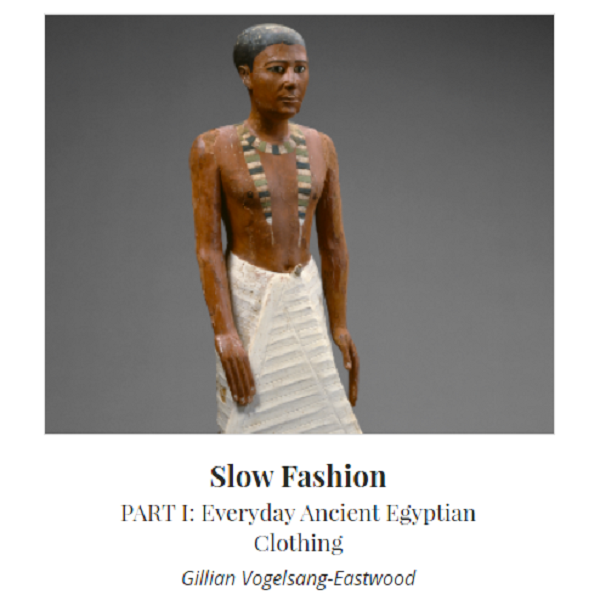
SLOW FASHION – Gillian Vogelsang-Eastwood
Our impressions of what ancient Egyptians wore have largely been shaped by modern-day films, but are these perceptions accurate? Or was the reality much more varied and complex? Dr Gillian Vogelsang Eastwood, director of the
Textile Research Centre in Leiden is a specialist in Middle Eastern dress and textiles who has spent many years working as a textile archaeologist in Egypt. She gives a more nuanced overview of what is known about ancient Egyptian dress including the production and use of textiles such as flax and wool. She also gives illustrated descriptions of the different garments worn by different genders and social layers of society.
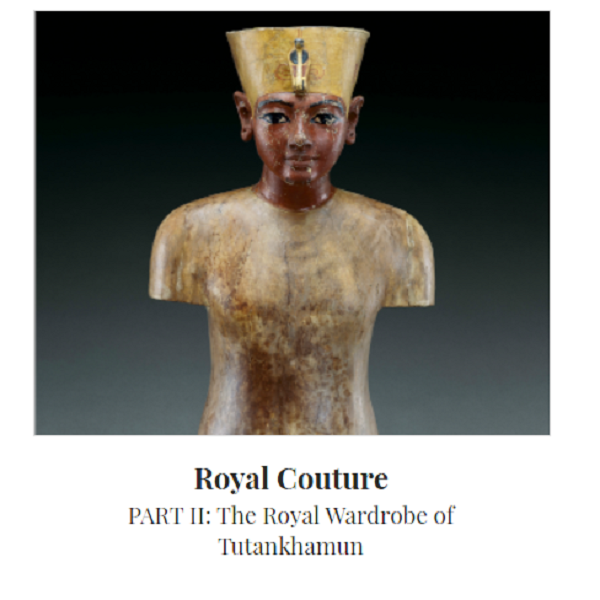
ROYAL COUTURE – Gillian Vogelsang-Eastwood
Tutankhamun was a minor king who reigned for a short time and died young in 1327 BCE. His name was all but forgotten until his tomb was rediscovered by British archaeologist Howard Carter. The young king is now famous, and his name conjures images of vast riches and treasures. His tomb also contained over four hundred linen textiles and garments.
In the early 1990s textile archaeologist, Dr Gillian Vogelsang Eastwood rediscovered these textiles in
Cairo Museum. Most of the collection was in the same boxes where Howard Carter placed them in 1922. In the article, Dr Gillian gives an overview of what she discovered during her work with these textiles.
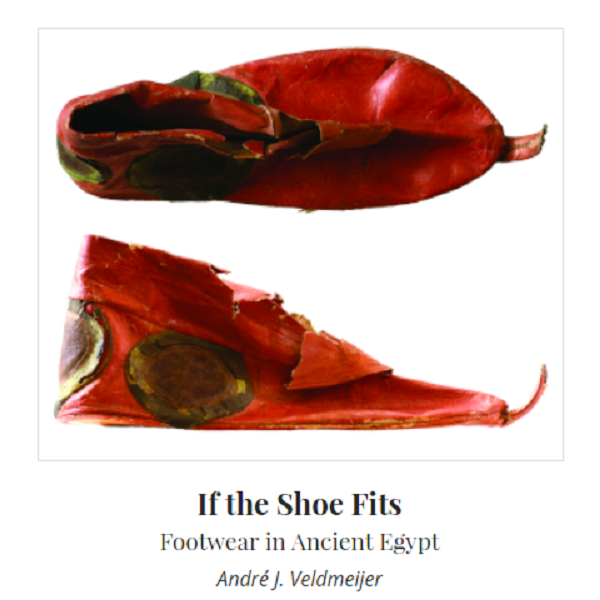
IF THE SHOE FITS – Andre J Veldmeijer
Archaeologist
Andre J Veldmeijer discusses the different types of footwear worn by ancient Egyptians. He looks at the reasons for specific types of footwear such as sandals vs closed shoes, the symbolism and status associated with certain types of shoes, as well as the different types of materials used to make shoes.
The variety and beauty of footwear prevalent in ancient Egypt led us to conclude that in addition to the many uses and symbolic meaning of footwear at the time, the aesthetic element was probably as important as it is today.
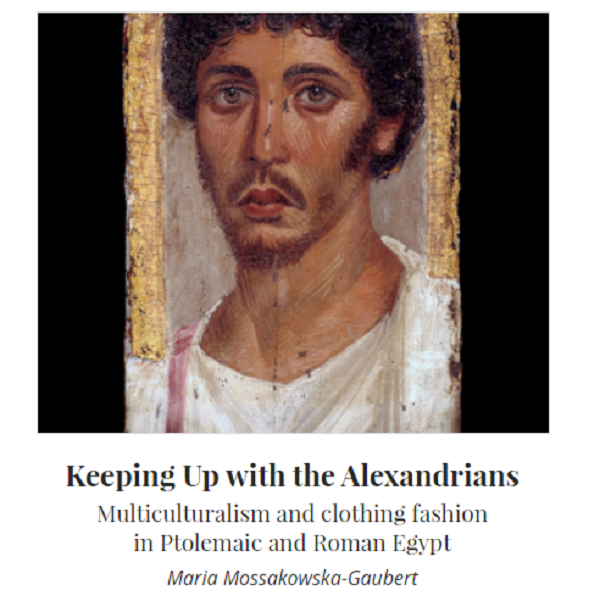
When Alexander the Great conquered Egypt, he triggered a profound cultural and social change. As traditions evolved, so too did clothing, reflecting a society caught between the familiarity of the past and the allure of the new. Alexander the Great arrived in Egypt as a liberator from Persian occupation and founded the city of Alexandria in 331 BCE.
Political, social, and cultural influences from Greek, Macedonian, Jewish, Roman and Byzantian occupiers and rulers were reflected in the way people dress. Polish archaeologist Maria Mosskwska-Gaubert explains these developments by illustrating the changes and diversities of the different styles of tunics worn in Egypt during these times.
It represents the complexity and diversity of society, where one finds a tendency towards assimilation or syncretism that clashes with the need to maintain tradition both among the indigenous inhabitants and among other ethnic groups living in Egypt at the time.
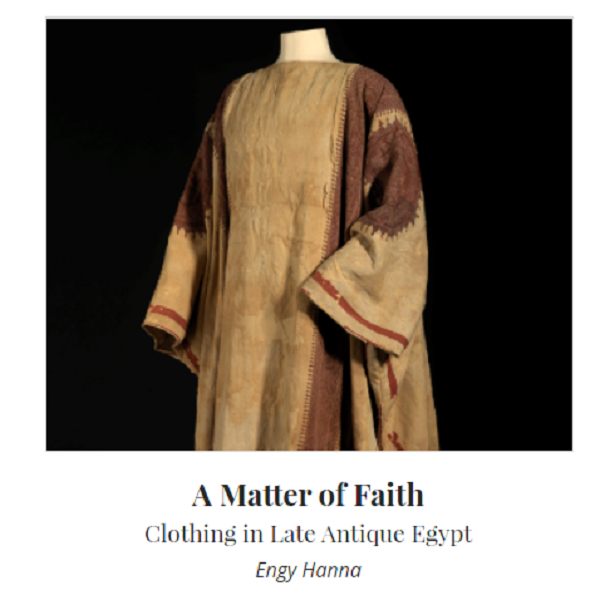
A MATTER OF FAITH – Engy Hanna
Spiritual dress in the Coptic period. In the late Roman and early Byzantine eras, clothing became a means of self-expression, incorporating everything from depictions of faith to rich colours, elaborate embroidery, and even amulets meant to protect and bring good fortune.
Engy Hanna has a PhD from Sussex University. Her research interest lies in Early Byzantine art history and has recently published her first book,
Women in Late Antique Egypt through Coptic Artefacts.
In the Roman and Early Byzantine worlds, dress was far more than a mere piece of cloth or covering of the body. It acted as a mirror of morality, status, and faith, and became inextricably entwined with the Egyptian identity that emerged during this time of transition.
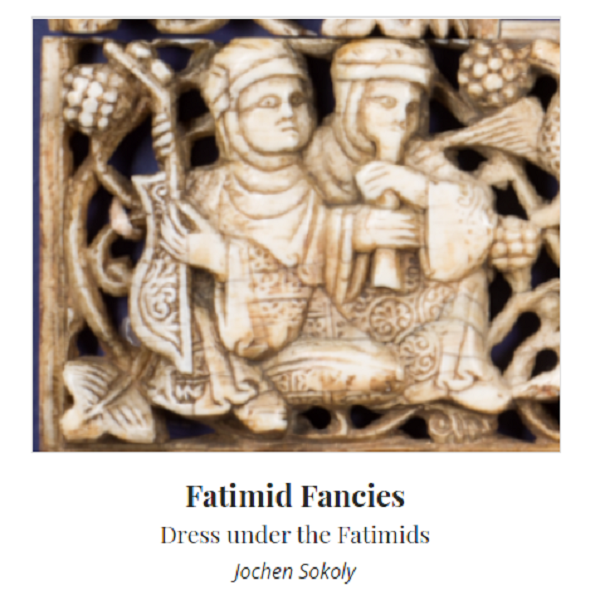
The epitome of medieval artistry. From fabulous ivory carvings to lavish textiles with intricate gold embroidery, everything the Fatimids left behind points to opulence and abundance of a scale we can only imagine.
What we know of dress in Egypt under the Fatimids is largely conditioned by what has survived in burials. Some of the inscribed caliphal textiles in many museums are truly stunning and unique. Others are less luxurious and represent what the middle class would have been using.
Jochen Sokoly is an associate professor of art history of the Islamic world at Virginia Commonwealth University School of the Arts in Qatar. His research focuses on the material culture of the early caliphates. He is currently preparing a publication on the early Islamic inscribed textiles in the al-Sabah Collection at the Kuwait National Museum.
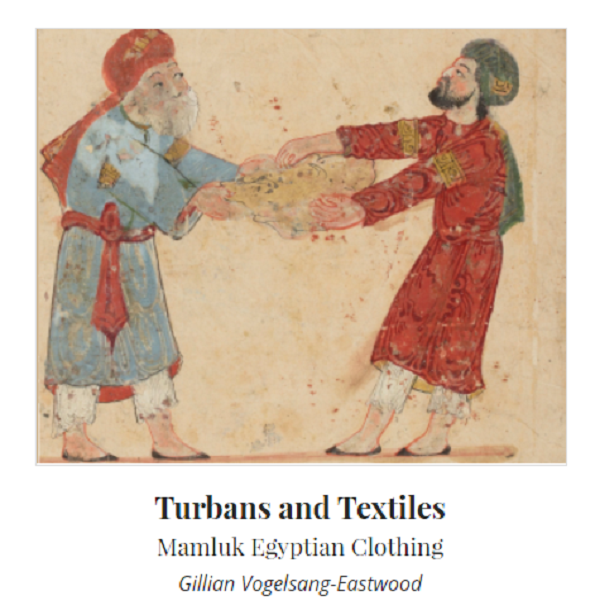
TURBANS & TEXTILES – Gillian Vogelsang-Eastwood
Dr Gillian explores the colourful, varied, and often complicated and elaborate daily clothing of Mamluk-era Egypt. While there is extensive literature on the era of the Mamluk Sultanate in Egypt and the Levant (1250-1517) it mostly describes the architecture and decorative arts. Far less is known about this era’s clothing and very few visual references remain.
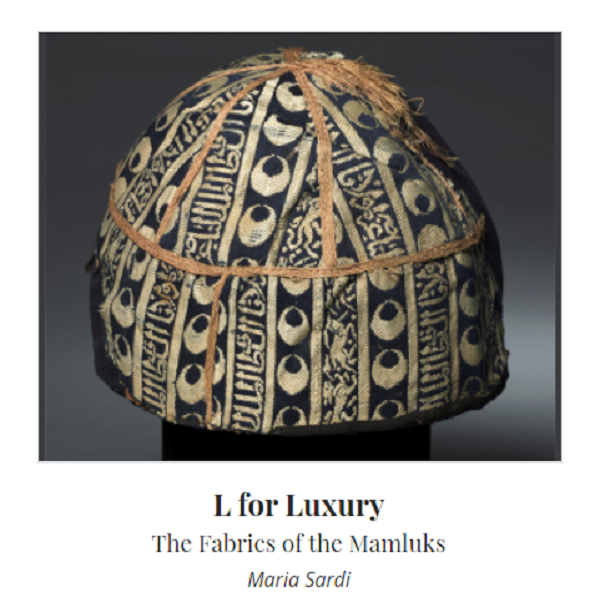
From gossamer-thin cotton to fine linens and heavy brocades, Mamluk fabrics set the standard for textiles throughout the Medieval world. Maria Sardi is an archaeologist who has conducted her PhD research called Mamluk Textiles in Context based on the Benaki Museum of Islamic Art.
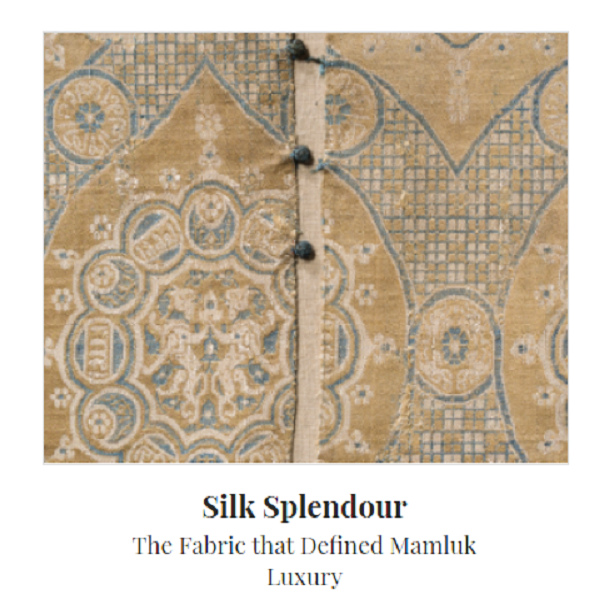
SILK SPLENDOUR – Shireen Ellinger
Of all the fine fabrics produced in Egypt during the Mamluk era, the sumptuous silks were perhaps the most renowned and coveted across the medieval world. Mamluk silks became highly valued throughout the Mediterranean and replaced Mongol silks on the European market by the second half of the fourteenth century. Shireen Ellinger is a doctoral researcher at the University of Bonn on the thesis Mamluk Silk Production in Egypt and Syria (1250-1400). She works at the
Nasser D. Khalili Collection of Islamic Art in London.
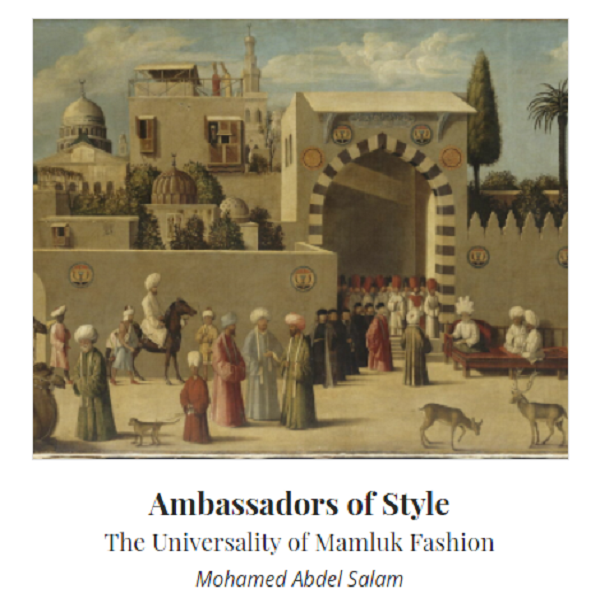
AMBASSADORS OF STYLE – Mohamed Abdel Salam
The Universality of Egyptian Mamluk Fashion. Egyptian fashion drew inspiration from places as far away as China and Japan, and in turn, influenced everyone from European royalty and mobility to Polish tailors and Venetian glassmakers.
When fashion travels across societies, it carries with it the character of its place of origin, reflecting the customs and culture of its people. Fabric and costume were not only a facet of the local social identity in Egypt, but also expressed the artistic, political, economic, and social identities all around the medieval Islamic world.
Mohamed Abdel Salam is the deputy director of the
Museum of Islamic Art in Cairo. He completed his PhD in Islamic Chinese art and Chinese influence in Japanese and Korean art. He teaches Islamic art and museology in Arabic, English, and Persian.
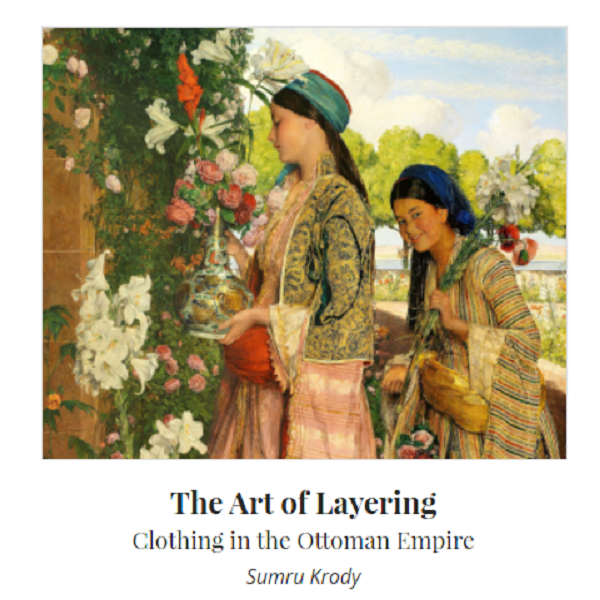
THE ART OF LAYERING – Sumru Krody
Clothing in the Ottoman Empire. The Ottomans arrived in Egypt in 1517 and Egypt became a province of the Ottoman Empire. Ottoman elites established themselves in large urban centres such as Cairo and Alexandria bringing with them Ottoman traditions and fashions.
In Ottoman-Turkish style, garments were constructed to reveal, through necklines, sleeve openings, and front openings, the varied and rich materials of the multiple layers worn underneath.
Sumru Krody is the senior curator of the Textile Museum Collections at George Washington University. She specializes in textiles from the Late Antique Period and Islamic lands.
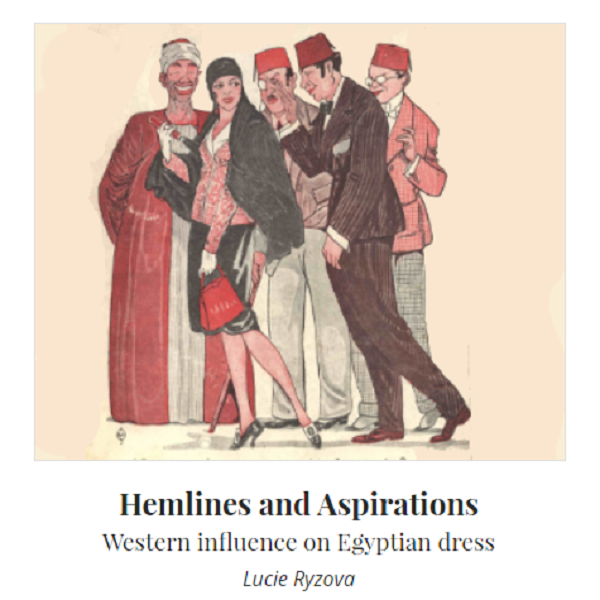
HEMLINES AND ASPIRATIONS – Lucie Ryzava
Western influence on Egyptian dress. In the early twentieth century, dress became a signifier of modernity often vying with traditional clothing in both urban and rural settings. The first to adopt European dress in place of Ottoman-Turkish fashions were the wives and daughters of Khedive Ismail (1863-1879).
Lucy Ryzava is an associate professor of modern Middle Eastern history at the University of Birmingham. She specializes in the social and cultural history of modern Egypt.
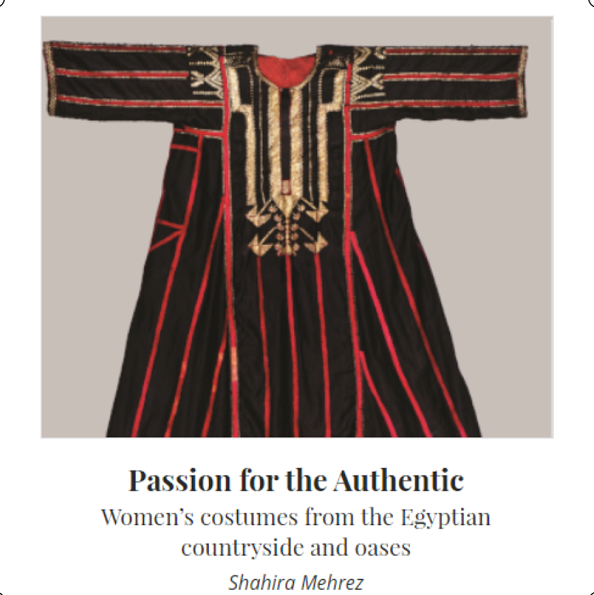
Shahira Meghrez illustrates the regional costumes and textile traditions around Egypt by featuring articles from her collection, including items from Nubia, Upper and Middle Egypt, the Delta, the southern oases including Kharga, Dakhla, and Bahariyya, and Siwa in the west.
A lifelong supporter of Middle Eastern arts, Shahira Mehrez began collecting and archiving Egyptian peasant dresses as a teenager. She holds a master’s degree in Islamic art and runs El Arish, a Sinai-based women’s collective that produces hand-embroidered Bedouin pieces. She is passionate about preserving traditional crafts and domestic resources while updating them for contemporary audiences. Her collection of over 500 dresses is the largest in Egypt and possibly the world.
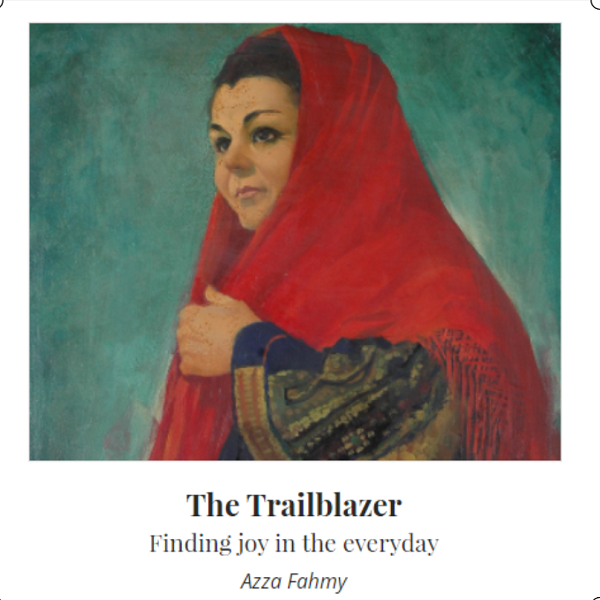
The untold story of
Reaya El-Nimr, who dedicated her life to documenting Egypt’s regional and traditional costumes, as told by her friend Azza Fahmy. Azza is one of the region’s foremost jewellery designers whose ambition is to convey Egyptian culture to the world through her unique approach to research and the preservation of traditional craftsmanship.

Written by editor Yasmine El Dorghamy, this is a short timeline and synopsis of Egyptian history from ancient times – the old and middle Kingdoms) through to modern times. It is a succinct conclusion to this collection of important articles written by specialists in their field. This edition of RAWI magazine is a valuable contribution to the documentation of Egyptian dress heritage. It is the perfect gateway into this fascinating topic, ideally suited to students, the general public, and those who do not have access to scholarly research.
Get your copy of the publication
here.



















